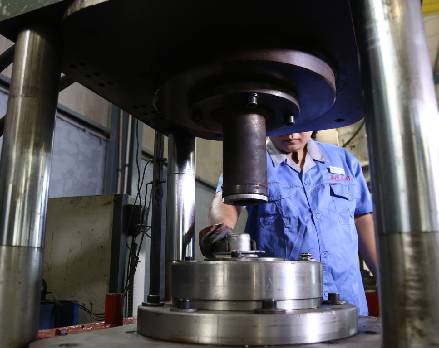 Afrikaans
Afrikaans  Albanian
Albanian  Amharic
Amharic  Arabic
Arabic  Armenian
Armenian  Azerbaijani
Azerbaijani  Basque
Basque  Belarusian
Belarusian  Bengali
Bengali  Bosnian
Bosnian  Bulgarian
Bulgarian  Catalan
Catalan  Cebuano
Cebuano  Corsican
Corsican  Croatian
Croatian  Czech
Czech  Danish
Danish  Dutch
Dutch  English
English  Esperanto
Esperanto  Estonian
Estonian  Finnish
Finnish  French
French  Frisian
Frisian  Galician
Galician  Georgian
Georgian  German
German  Greek
Greek  Gujarati
Gujarati  Haitian Creole
Haitian Creole  hausa
hausa  hawaiian
hawaiian  Hebrew
Hebrew  Hindi
Hindi  Miao
Miao  Hungarian
Hungarian  Icelandic
Icelandic  igbo
igbo  Indonesian
Indonesian  irish
irish  Italian
Italian  Japanese
Japanese  Javanese
Javanese  Kannada
Kannada  kazakh
kazakh  Khmer
Khmer  Rwandese
Rwandese  Korean
Korean  Kurdish
Kurdish  Kyrgyz
Kyrgyz  Lao
Lao  Latin
Latin  Latvian
Latvian  Lithuanian
Lithuanian  Luxembourgish
Luxembourgish  Macedonian
Macedonian  Malgashi
Malgashi  Malay
Malay  Malayalam
Malayalam  Maltese
Maltese  Maori
Maori  Marathi
Marathi  Mongolian
Mongolian  Myanmar
Myanmar  Nepali
Nepali  Norwegian
Norwegian  Norwegian
Norwegian  Occitan
Occitan  Pashto
Pashto  Persian
Persian  Polish
Polish  Portuguese
Portuguese  Punjabi
Punjabi  Romanian
Romanian  Russian
Russian  Samoan
Samoan  Scottish Gaelic
Scottish Gaelic  Serbian
Serbian  Sesotho
Sesotho  Shona
Shona  Sindhi
Sindhi  Sinhala
Sinhala  Slovak
Slovak  Slovenian
Slovenian  Somali
Somali  Spanish
Spanish  Sundanese
Sundanese  Swahili
Swahili  Swedish
Swedish  Tagalog
Tagalog  Tajik
Tajik  Tamil
Tamil  Tatar
Tatar  Telugu
Telugu  Thai
Thai  Turkish
Turkish  Turkmen
Turkmen  Ukrainian
Ukrainian  Urdu
Urdu  Uighur
Uighur  Uzbek
Uzbek  Vietnamese
Vietnamese  Welsh
Welsh  Bantu
Bantu  Yiddish
Yiddish  Yoruba
Yoruba  Zulu
Zulu Feb . 10, 2025 09:46
Back to list
types of pulley in conveyor belt
Understanding the various types of pulleys used in conveyor belt systems is pivotal for optimizing industrial operations. These specialized components play an indispensable role in enhancing efficiency, reliability, and safety. In this guide, we delve into the unique types of pulleys in conveyor belt systems, offering insights based on industry expertise and authoritative evaluations.
5. Bend Pulley Typically found on the return side of the conveyor system, bend pulleys help change the belt's direction. Proper configuration of bend pulleys can facilitate smoother operations, particularly in complex systems that require a high degree of maneuverability. Ensuring these pulleys are of robust construction is crucial for bearing the stresses of high-tension applications in heavy-duty industries like mining and material handling. 6. Wing Pulley Wing pulleys are distinguished by their unique design, featuring vanes that project from the center axis like spokes. This innovative design enables debris to be easily expelled from the belt, significantly reducing the risk of build-up that could cause damage or inefficiency. Experts recommend wing pulleys for environments where material spillage and residue build-up are of concern, as they enhance the lifespan of the conveyor system by minimizing cleaning and maintenance intervals. 7. Live Shaft vs. Dead Shaft Pulleys Understanding the differentiation between live shaft and dead shaft pulleys can directly impact the conveyor’s maintenance strategy. Live shaft pulleys come with internal bearings and bolts, facilitating easier installation and lower initial costs. In contrast, dead shaft pulleys are constructed with an immobile shaft, offering superior stability and better load distribution, which is crucial for high-capacity applications. Selecting the appropriate type based on operational load and maintenance capabilities can provide a significant advantage. Incorporating these specialized pulleys is not merely about maintaining the conveyor belt’s functionality. It is about enhancing productivity and ensuring long-term operational success. By leveraging expertise in selecting the right pulleys for specific conveyors, businesses can reduce maintenance costs, minimize downtime, and optimize overall system performance. For industrial sectors relying heavily on conveyor systems, informed pulley choice is a decisive factor for competitive advantage, operational safety, and longevity.


5. Bend Pulley Typically found on the return side of the conveyor system, bend pulleys help change the belt's direction. Proper configuration of bend pulleys can facilitate smoother operations, particularly in complex systems that require a high degree of maneuverability. Ensuring these pulleys are of robust construction is crucial for bearing the stresses of high-tension applications in heavy-duty industries like mining and material handling. 6. Wing Pulley Wing pulleys are distinguished by their unique design, featuring vanes that project from the center axis like spokes. This innovative design enables debris to be easily expelled from the belt, significantly reducing the risk of build-up that could cause damage or inefficiency. Experts recommend wing pulleys for environments where material spillage and residue build-up are of concern, as they enhance the lifespan of the conveyor system by minimizing cleaning and maintenance intervals. 7. Live Shaft vs. Dead Shaft Pulleys Understanding the differentiation between live shaft and dead shaft pulleys can directly impact the conveyor’s maintenance strategy. Live shaft pulleys come with internal bearings and bolts, facilitating easier installation and lower initial costs. In contrast, dead shaft pulleys are constructed with an immobile shaft, offering superior stability and better load distribution, which is crucial for high-capacity applications. Selecting the appropriate type based on operational load and maintenance capabilities can provide a significant advantage. Incorporating these specialized pulleys is not merely about maintaining the conveyor belt’s functionality. It is about enhancing productivity and ensuring long-term operational success. By leveraging expertise in selecting the right pulleys for specific conveyors, businesses can reduce maintenance costs, minimize downtime, and optimize overall system performance. For industrial sectors relying heavily on conveyor systems, informed pulley choice is a decisive factor for competitive advantage, operational safety, and longevity.
Latest news
-
Revolutionizing Conveyor Reliability with Advanced Rubber Lagging PulleysNewsJul.22,2025
-
Powering Precision and Durability with Expert Manufacturers of Conveyor ComponentsNewsJul.22,2025
-
Optimizing Conveyor Systems with Advanced Conveyor AccessoriesNewsJul.22,2025
-
Maximize Conveyor Efficiency with Quality Conveyor Idler PulleysNewsJul.22,2025
-
Future-Proof Your Conveyor System with High-Performance Polyurethane RollerNewsJul.22,2025
-
Driving Efficiency Forward with Quality Idlers and RollersNewsJul.22,2025
OUR PRODUCTS




























